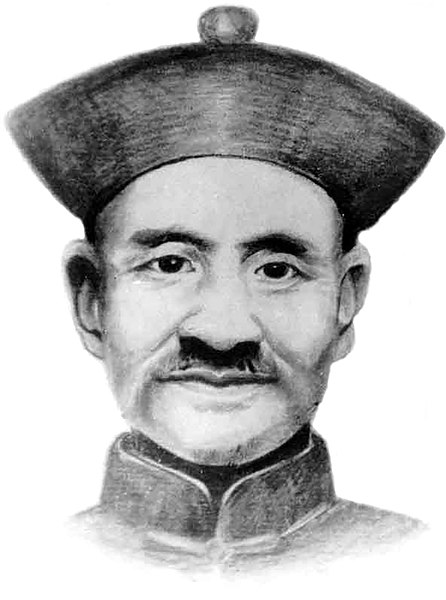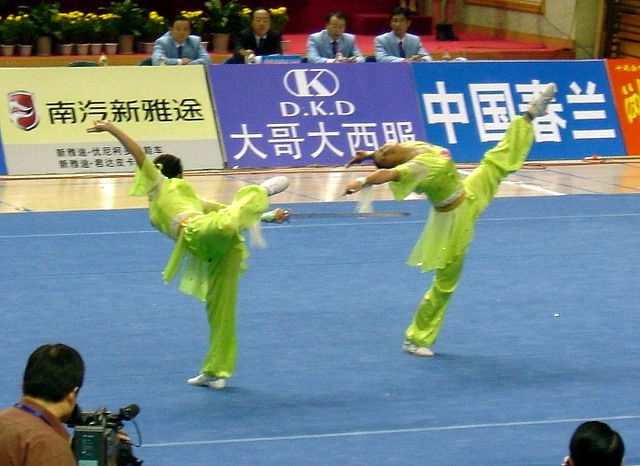Wu (Hao)-style tai chi is one of the five primary styles of tai chi. It was created in the mid-nineteenth century by Wu Yuxiang, a member of a wealthy and influential family in Yongnian, Hebei, China. Wu trained for approximately ten years with the founder of Yang-style tai chi, and then for over a month with a Chen-style master. Wu also obtained a manual on internal martial arts that formed the core of what are now known as the tai chi classics and include Wu's own writing on the subject. From these sources Wu and his family developed their own style, and may also have developed much of the cultural and intellectual foundation of tai chi as well.
Wu Yuxiang (left), founder, and Hao Weizhen (right), third-generation grandmaster of Wu (Hao)-style tai chi
Li Yiyu (李亦畬, 1832–1892)
Li Xuzhi (李逊之, 1882–1944)
Hao Shaoru (郝少如, 1907-1983)
Tai chi is an internal Chinese martial art practiced for self-defense and health. Known for its slow, intentional movements, tai chi has practitioners worldwide and is particularly popular as a form of gentle exercise and moving meditation, with benefits to mental and physical health.
Yang Chengfu (c. 1931) in Single Whip posture of Yang-style tai chi solo form
Painting in Chenjiagou, illustrating taolu according to the Chen style of tai chi
A pair of jian with their scabbards
Wushu jian pair event at the 10th All China games








